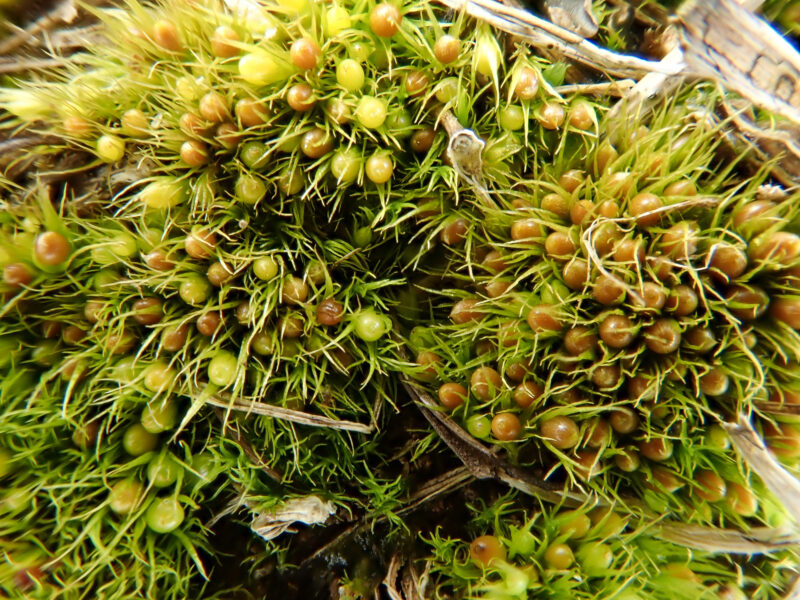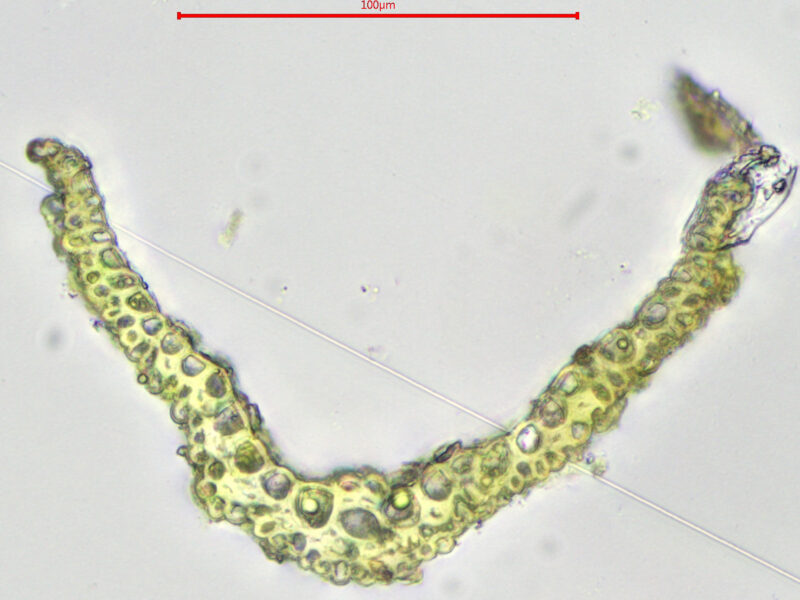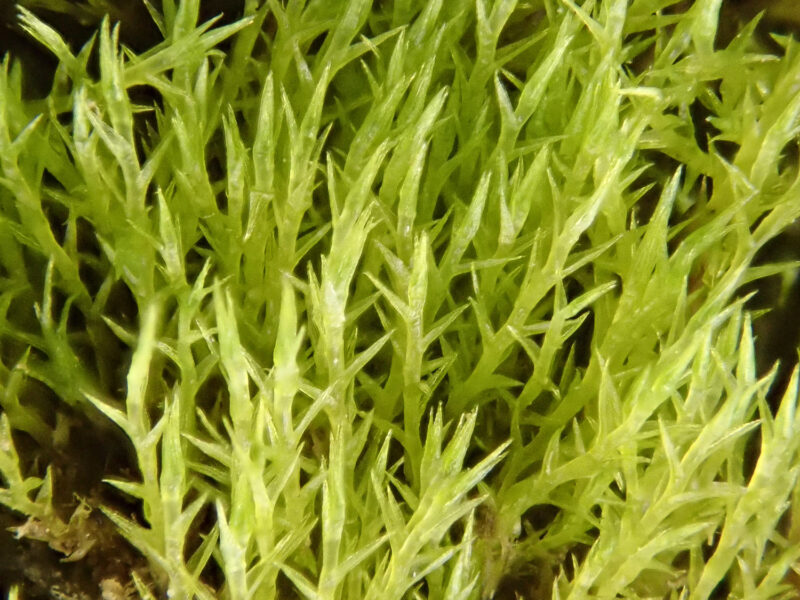Identification notes
One of a class of small pioneering acrocarps with a short life-cycle, P. acuminatum is normally seen with capsules, which make it conspicuous. It’s a common enough species of disturbed, well-drained acid soils and typically grows in dense patches.
Its capsules usually mature in spring or summer, so in the winter you may come across immature plants without them. These are confusing as they can be mistaken for other acrocarps with long, slightly curved leaves, such as Dicranella heteromalla, Ditrichum heteromallum, Pseudephemerum nitidum or even Flexitrichum gracile. Without capsules, a good field character that suggests Pleuridium is perichaetial leaves much longer than the uppermost stem leaves.
If capsules are present, then it is a straightforward species to recognise. The location of the antheridia is important. In P. acuminatum they can be dissected out from the perichaetial leaves around the seta. P. subulatum is less common but more likely on neutral to slightly acidic soils. A dissecting microscope is often needed to check for bud-like male branches in the axils of the stem leaves in that species; some gentle cleaning may also be needed to remove soil and detritus first.
Read the Field Guide account
















